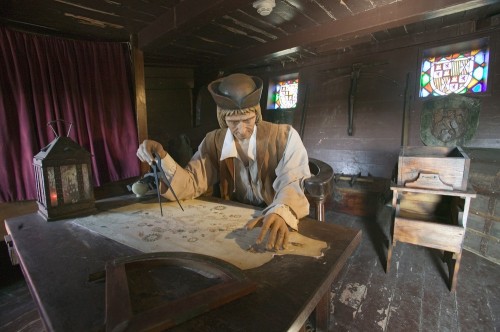Barry Clifford, who specializes in sunken ships, discovered the ship already a decade ago but believed that it was a ship from a later period. He realized that it was Columbus's ship only after doing research on the cannon that was discovered on it

Were the remains of the ship that changed history discovered after over 500 years? Maritime archaeologists who explored the coast of Haiti believe that they have discovered the remains of Columbus's flagship - the Santa Maria.
"All the geographical and archaeological evidence as well as the underwater topography strengthen the proof that these are indeed the remains of the ship that sank in December 1492, about a month after Columbus landed on the shores of the New World." lead researcher Barry Clifford told the website The Independent the British.
Clifford said that the location of the ship, on a reef 3-5 meters below the surface of the water in the northern bay of Haiti, matches the description in Columbus's diary as to the location of the sinking. Columbus returned to Spain aboard one of the other two ships Pinta and Niña.
The size of the sunken ship is similar to that of Santa Maria, rocks found nearby are from the area in Spain from where the stones were brought to balance the ship, and the smoking gun is a cannon from the 15th century. In an interview with the CNN website Clifford said he discovered the ship in 2003, but misdated the age of the cannon. Only about two years ago, after doing research on the cannons from the time of Columbus, he woke up in the middle of the night with the insight that it was Columbus' ship. Currently Clifford has only photographed and scanned the remains but he also intends to use them for a full archaeological study.
In the same topic on the science website:
